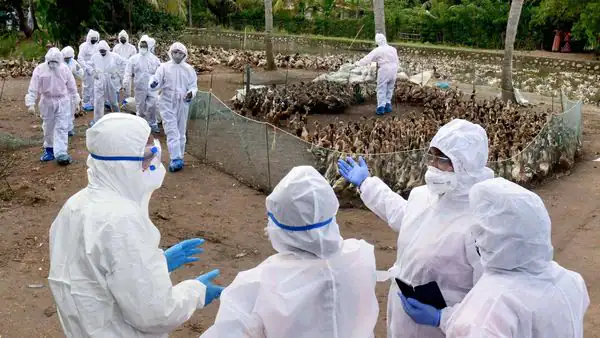
Avian Flu Update
The recent confirmation of a second human case of Avian Influenza (bird flu) in the United States has caused a stir of worry. This comes after the first human case was reported in Colorado just a short while ago. With the new case being the first in Texas and linked to contact with cows, let’s delve deeper into this situation and understand the implications for human health.
What is Avian Influenza and Why is it Concerning?
Avian influenza, commonly known as bird flu, is a respiratory illness primarily affecting birds. Several strains of the virus exist, with some highly contagious among birds and a few with the potential to infect humans. The current concern surrounds the H5N1 strain, a highly pathogenic strain that can cause severe illness and even death in birds.
While the transmission of bird flu from birds to humans is uncommon, it can happen through direct contact with infected birds or contaminated environments. This typically involves close contact with infected poultry or their droppings. However, the recent case in Texas raises concerns about potential transmission routes beyond direct bird contact.
The Second US Case: A Shift in Transmission?
The individual diagnosed with bird flu in Texas reportedly had contact with cows, not poultry. This has health officials investigating a possible spillover event where the virus jumped from infected birds to cows and then to the human. While the exact route of transmission is still under investigation, it highlights the potential for the virus to mutate and adapt to new hosts.
What are the Symptoms of Avian Flu in Humans?
Symptoms of bird flu in humans can vary but often resemble those of the common flu. These include:
- Fever or chills
- Cough
- Sore throat
- Muscle or body aches
- Headache
- Fatigue
- Shortness of breath
- Diarrhea and vomiting (less common)
It’s important to note that not everyone infected with bird flu will experience all these symptoms. If you have been around sick or dead poultry and develop flu-like symptoms, it’s crucial to seek medical attention immediately and inform your doctor about your potential exposure.
How Worried Should We Be?
The current risk of widespread transmission of bird flu to humans in the US is considered low. Public health officials are closely monitoring the situation and taking steps to contain outbreaks in poultry populations. However, the recent human cases serve as a reminder that the virus can jump species and the situation requires vigilance.
What Can We Do to Stay Safe?
Here are some steps you can take to minimize your risk of contracting bird flu:
- Avoid contact with sick or dead poultry. This includes both wild birds and domestic flocks.
- Practice good hygiene. Wash your hands thoroughly with soap and water after handling animals or being around poultry farms.
- Cook poultry products thoroughly. Ensure proper internal temperatures are reached during cooking (165°F for poultry and 180°F for ground poultry).
- Don’t consume raw or undercooked eggs.
- Stay informed. Keep updated on the latest developments about bird flu outbreaks through reliable sources like the Centers for Disease Control and Prevention (CDC).
Looking Ahead: Research and Preparedness
Researchers are constantly developing new vaccines and antiviral medications to combat avian influenza. Additionally, strong surveillance programs are in place to monitor bird populations for signs of the virus. The recent human cases highlight the importance of continued research and preparedness efforts to mitigate the risk of bird flu pandemics.
Conclusion:
While the current situation with bird flu may seem concerning, it’s important to remain calm and informed. The risk of widespread human transmission remains low, but vigilance and adherence to preventive measures are crucial. By following public health recommendations and staying updated on developments, we can all play a part in minimizing the spread of the virus and protecting ourselves and our loved ones.






